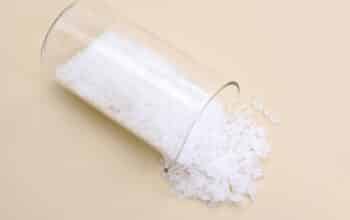For decades, industrial agriculture was the dominant system of food production. Large farms planted the same crops each year, using enormous amounts of chemicals that resulted in soil depletion, water, and air pollution, biodiversity reduction, and climate change overall. All in all, this system was set on producing as much product as possible, not caring about the resources it takes and the environmental harm it causes.
Luckily, modern farmers tend to commit to innovative agricultural practices like smart water management through precision irrigation, reduced chemicals used based on plant needs, and much more. All those principles are aimed at environmental protection and economic efficiency while satisfying the world’s food demand. The system that encompasses such environmentally-friendly agricultural practices is called sustainable farming.
In this piece we’ll go through the most sustainable practices modern farmers use to get high yields without causing environmental harm.
Permaculture
Permaculture (permanent agriculture) is a systematic approach to agriculture and farmland design based on natural relationships in ecosystems. Ideally, the system should be closed, i.e. provide for itself, do not harm nature, and exist for a long time.
The main tool of permaculture is the functional organization of space – permadesign. The ability to identify and establish connections between all elements of the environment is key to a harmonious arrangement of a particular farmsite. A competent approach to the design of land will increase its treatment efficiency, reduce labor costs, and increase productivity in general. Permaculture does not tolerate the use of synthetic fertilizers, pesticides, plant growth regulators and stimulants, and genetically modified seeds.
Permaculture includes all the principles of natural farming, but it is a broader concept. This is not a collection of individual methods of growing plants, but rather a way of thinking.
Permaculture principles include:
- Observation and interaction: all elements of the system interact with each other
- Multifunctionality: each element has several functions, and each function is provided by several elements
- Rational and efficient use of all types of energy
- Rational use of natural resources
- Exploiting natural diversity: complementing one with the other, not separating
- Waste-free production
- Intensive use of systems in a small area
- Use and active participation of natural flows and cycles
- Gradual space development and long-term results
Precision Agriculture
Precision farming is a high-tech agricultural management system designed to maximize profit from every acre of the field. It allows farmers to affect crop productivity in different field zones, optimize plant nutrition and watering, make smart and timely decisions, predict yield, and more.
Precision farming is implemented via the use of geographic information systems, global positioning technologies, yield estimation, variable rate application, and remote sensing. The technical means are radio navigation receivers, parallel driving systems, yield mapping devices, automatic samplers, various sensors, and measuring systems.
The introduction of precision farming technologies contributes to the production of high-quality agricultural products and environment preservation. It provides a great economic effect, restores soil fertility, and increases food quality. The system of precision farming has become very popular in the face of rising prices for seeds, fertilizers, and fuel as it helps to significantly reduce costs and increase the profitability of agribusiness.
Polycultures and Crop Rotation
Both polyculture and crop rotation techniques are aimed at mimicking natural principles to achieve the highest crop yields.
Polyculture is a technology of compacted and mixed sowing of vegetable crops, which allows doubling the yield of each without additional efforts on the part of the farmer. The principle is growing several compatible crops on the same field.
Crop rotation is the scientifically based alternation of crops and fallow in time and space or only in time. The alternation of crops in time is their change over the years in the same field. Crop rotation means that each crop is rotated sequentially through all fields.
Crop rotation is one of the main links of the farming system and represents the basis for all agronomic measures, in particular, soil cultivation systems, fertilizer systems, measures to combat soil erosion, crops protection from weeds, diseases, and pests.
Crop rotation and polyculture contribute to smarter use of soil nutrients and fertilization, improvement and maintenance of favorable physical and biological properties of soil, protecting it from water and wind erosion, preventing the spread of weeds, diseases, and pests of agricultural crops, reducing the pesticide load on the soil, plants and improving the ecological the state of the environment, obtaining high-quality products.
Mulching
Mulching is an effective agricultural technique, which implies the formation of a loose, moisture-saving, surface layer by constantly loosening the soil or covering it with a layer of special materials to protect and improve its properties. It allows farmers to combat compaction, drying out, loss of soil structure, and low fertility. It is especially important to apply it in hot, arid regions, where bare soil turns into a cracked desert and loses its fertility.
Integrated Pest Management
IPM is an ecosystem strategy that focuses on the long-term prevention of pests and their damage through a combination of such techniques as biological control, habitat manipulation, and the use of resistant varieties. Pesticides are used only after constant monitoring shows that they are necessary in accordance with established guidelines, and treatment is carried out to remove only the targeted organism. Pest control materials are selected and applied to minimize risks to human health, beneficial and non-target organisms, and the environment.













